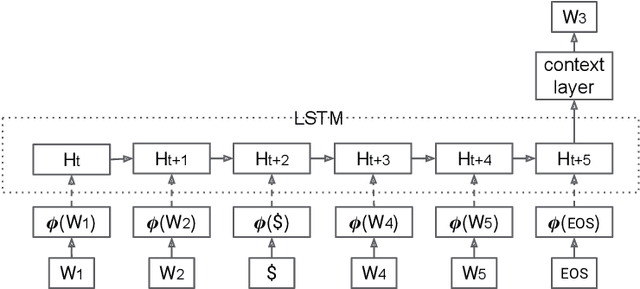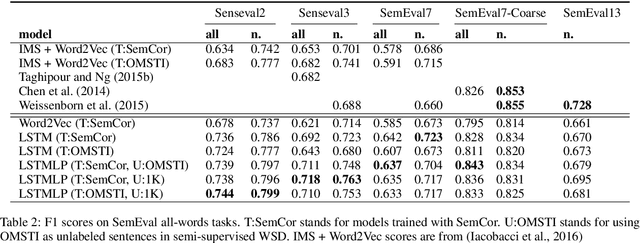Dayu Yuan
Semi-supervised Word Sense Disambiguation with Neural Models
Nov 05, 2016



Abstract:Determining the intended sense of words in text - word sense disambiguation (WSD) - is a long standing problem in natural language processing. Recently, researchers have shown promising results using word vectors extracted from a neural network language model as features in WSD algorithms. However, a simple average or concatenation of word vectors for each word in a text loses the sequential and syntactic information of the text. In this paper, we study WSD with a sequence learning neural net, LSTM, to better capture the sequential and syntactic patterns of the text. To alleviate the lack of training data in all-words WSD, we employ the same LSTM in a semi-supervised label propagation classifier. We demonstrate state-of-the-art results, especially on verbs.
 Add to Chrome
Add to Chrome Add to Firefox
Add to Firefox Add to Edge
Add to Edge